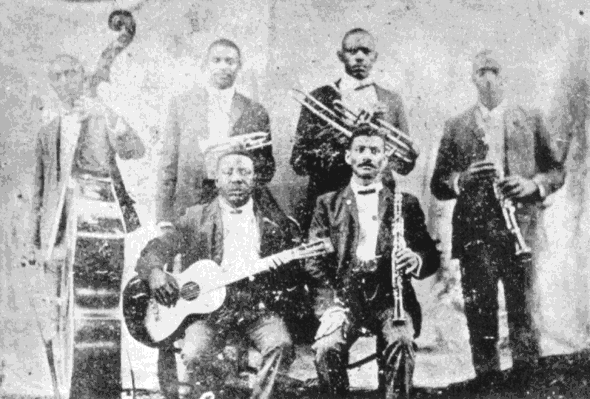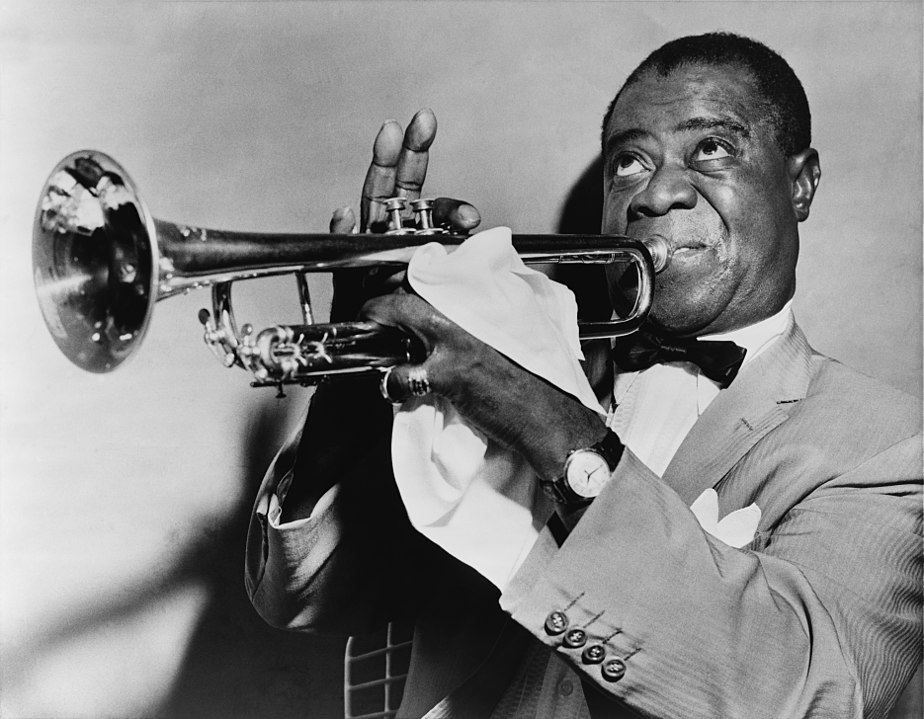What African Americans could not achieve in the courtroom they did in the dance hall, with the invention of a rebellious, and wholly American, new musical artform.
-
Spring 2021
Volume66Issue3
Editor's Note: Brent Glass is Director Emeritus of the Smithsonian’s National Museum of American History and the author of 50 Great American Places: Essential Historic Sites Across the U.S., from which this essay is adapted.

On New Year's Eve in 1912, a poor eleven-year-old African American boy named Louis Armstrong was arrested for firing a pistol near his home in New Orleans's Third Ward. As punishment he spent eighteen months at the Colored Waifs' Home, where he learned to play popular songs on a cornet. When he came home, he began playing jazz, the new music sweeping the urban South, and launched a storybook career as a musician, entertainer, and cultural ambassador.
New Orleans was the perfect setting to nurture the talent and ambition of Louis Armstrong. Founded by the French in 1718, it was an international seaport attracting people from around the world who brought with them the music of their homeland. Dancing was also integral to the city's cultural life—including ballroom dances such as the waltz, polka, mazurka, and schottische—as were marching bands and parades, and weekly gatherings in Congo Square staged by the city's large slave population. New Orleans residents attended musical performances of all kinds, from opera and chamber music to the elaborate processions of Mardi Gras to informal gatherings in parks and at festivals. After the Civil War, the audience for music in New Orleans increased to include thousands of black migrants, including Armstrong's family, from plantations in the Mississippi delta.
The late nineteenth century was a time when the rigid code of racial segregation in the South firmly defined social and cultural boundaries through Jim Crow laws, designed to enforce segregation, and mob violence. Even in New Orleans, with its history of close contact among ethnic groups, the policy of segregation prevailed. The black community responded with resentment and resistance. The famous case of Plessy v. Ferguson involved a black Creole, Homer Plessy, who contested a Louisiana statute requiring “equal but separate” seating in railroad coaches. The U S. Supreme Court upheld this statute in 1896.

What African Americans could not achieve in the courtroom they did achieve in the dance hall. Jazz music emerged as a form of rebellion, a direct challenge to the dominant white society. The blues music of rural black migrants, shaped by spirituals and work songs, merged with the music of dance halls, parades, rallies, and funerals played by New Orleans's working class, mostly African Americans, who became known for altering, or “ragging," their performances.
By adding notes and embellishments and ornamentation, by using syncopation — irregular beats and improvised ensemble playing, they produced a distinctive sound. Other ethnic groups, especially Afro-Creoles such as pianist Ferdinand “Jelly Roll Morton” LaMothe, trained in classical traditions and members of Italian and German brass brands joined in creating a vernacular music called ragtime.
Ragtime quickly spread from New Orleans around the country on riverboats and railroads and through the burgeoning sheet music publishing industry. While some ragtime performers offered more refined and structured variations, most black musicians in New Orleans continued to play with a raw, emotional, and rebellious spirit. The undisputed leader of this new music was Charles “Buddy” Bolden, an African American cornetist whose wild and exuberant style attracted a large following around 1900. His band played throughout the city, including black establishments like the Funky Butt Hall on Perdido Street, which featured ragtime that was loud, fast, and erotic. The highly sexualized dancing, raunchy humor, and heavy drinking associated with Bolden's performances established the identity of the new music. Although Bolden stopped performing before the word jazz appeared, around 1913, he is generally acknowledged as the first jazz musician.
The rise of Bolden and other pioneer jazzmen coincided with the establishment of Storyville, the notorious section of the city where prostitution was permitted and brothels catered to customers from plantations, city neighborhoods, riverboats, and merchant ships. From 1897 to 1917, Storyville became known not only for its brothels but also as an entertainment center with bars, dance halls, and gambling clubs. Jazz was not invented in Storyville, but it was there that musicians played it with great fare and intensity, and where audiences from around the world probably heard it for the first time.
Louis Armstrong grew up near Storyville and absorbed all the sounds that filled the city day and night. At fourteen, he got his first job, playing cornet in a bar. His big break came when Joe “King” Oliver, a prominent bandleader, became his mentor. By 1919, he was playing on summer riverboat excursions; three years later, Oliver invited him to join his band in Chicago. Other top jazz performers from New Orleans had also left the city—clarinetist Sidney Bechet to Europe; composer and pianist Jelly Roll Morton to Los Angeles and Chicago. Other bands headed to New York.
Armstrong dominated the jazz world in the 1920s. He developed a personal style, introducing solo performing and vocalizing. In 1927, he began playing the trumpet and demonstrated an incredible talent for his extended range—he once hit two hundred high Cs in a row! From 1925 to 1928, he and his groups, the Hot Five and Hot Seven, made eighty-nine legendary recordings, which established jazz as an art form. His 1928 duets with pianist Earl “Fatha” Hines were brilliant demonstrations of craftsmanship and innovation. His music influenced several generations from Duke Ellington to Wynton Marsalis. He also became a popular and be loved public figure throughout the world, the most recognized personality of the period that F. Scott Fitzgerald called “the Jazz Age.”

In 1980, New Orleans dedicated Armstrong Park, a thirty-one-acre site bordering the French Quarter. The park features a statue of Arm strong by Elizabeth Catlett, a monument to jazz soloist Sidney Bechet, a memorial grove honoring twelve jazz pioneers, and the Mahalia Jackson Center for the Performing Arts. The site of Congo Square is located in the park as well as Municipal Auditorium, where Armstrong played annual concerts. It is a short walk to the former Storyville district in the Tremé neighborhood, where only a few historic buildings remain, including Lulu White's Saloon on Basin Street and Frank Early's “My Place” saloon on Bienville Street. The National Park Service offers tours of major sites related to jazz history.
The musical heritage of New Orleans is so powerful that it overshadows architectural treasures in the French Quarter, where the Historic New Orleans Collection has preserved several landmarks, and in the Garden District. Two French Quarter landmarks are the Cabildo, built in 1788 as Spain's government center when it controlled New Orleans and now a state museum, and Preservation Hall, where traditional New Orleans jazz is still performed. A few blocks away, in the warehouse district, excellent museums such as the National WWII Museum and the Ogden Museum of Southern Art are worth visiting.
The city's living historical traditions engage visitors. In spite of hurricanes and floods, scandals and crime, it is still “the Big Easy," with its leisurely pace, famous restaurants, and nonstop musical performances. Its residents have held on to and nurtured this heritage and its legacy of creativity, diversity, and resilience.
Plan a trip:
New Orleans Jazz Historical Park
Storyville
Congo Square-Louis Armstrong Park
Preservation Hall
Ogden Museum of Southern Art

